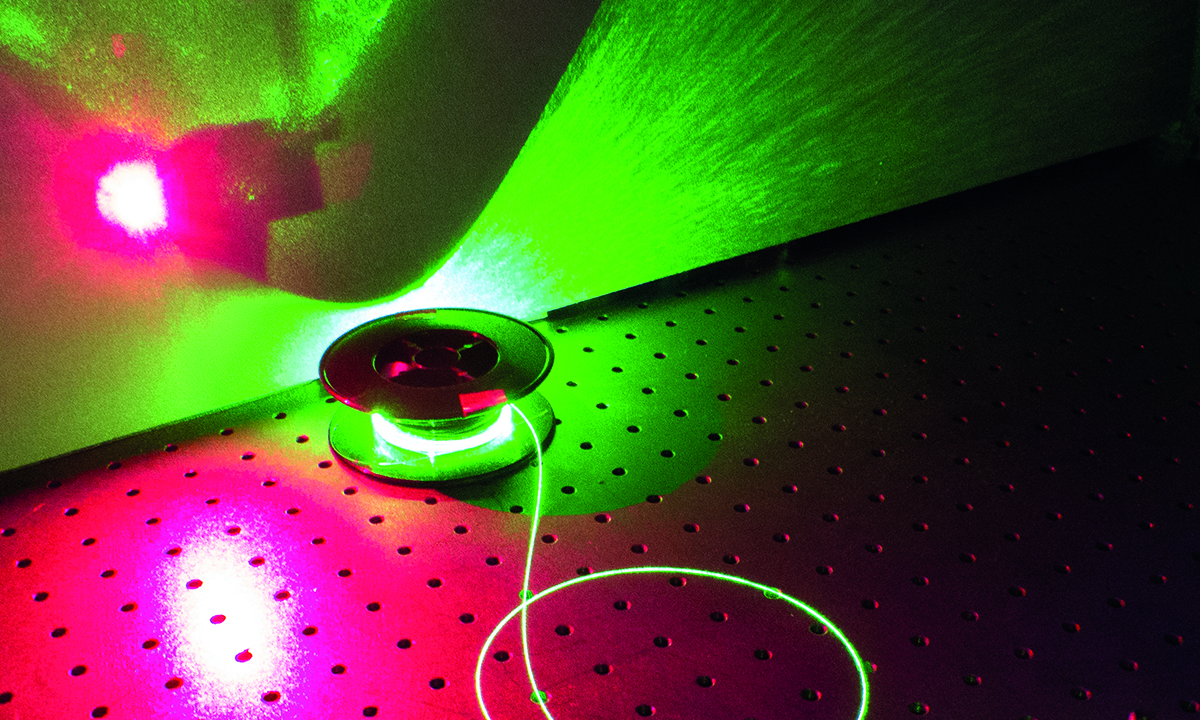Department Laser Technology (LAS)
The Laser Technology Department researches and develops specific photonic materials and components as well as associated laser sources and nonlinear converters in the spectral ranges NIR, SWIR, MWIR and LWIR. The focus is on the special requirements of optronic applications.
Based on our expertise in rare earth (e.g. Erbium Er3+, Thulium Tm3+, Holmium Ho3+) and transition metal (Chromium Cr2+) doped laser materials and source architectures, we develop SWIR and MWIR solid state and fiber lasers as well as associated components. In typical applications such as communication, illumination and metrology, these lasers can be used as direct emitters or as pump sources for nonlinear converters and can be optimized accordingly.
Experimentally we are working on high-power CW as well as pulsed 2 µm fiber lasers, components and architectures, pulsed 1.6 µm and 2.1 µm solid state lasers with high pulse energy and direct emitting MWIR fiber lasers. To enable scaling of power and additional functionalities of new laser systems, we develop, implement and test novel components under laboratory conditions and for integrated robust laser sources. This includes fiber couplers and spliced components for SWIR and MWIR fibers, novel laser materials and resonator geometries.
Based on our laser sources we investigate nonlinear converter materials and develop and optimize architectures for MWIR and LWIR sources with properties especially tailored to optronics applications. Furthermore, we test optical components for their laser-induced damage threshold, for which we operate a specially developed, constantly modernized test stand.
Our theoretical work focuses on the modeling of complex laser dynamics and novel resonator systems to achieve better beam quality in the operation of high average power lasers and nonlinear converters.
 Fraunhofer Institute of Optronics, System Technologies and Image Exploitation IOSB
Fraunhofer Institute of Optronics, System Technologies and Image Exploitation IOSB 